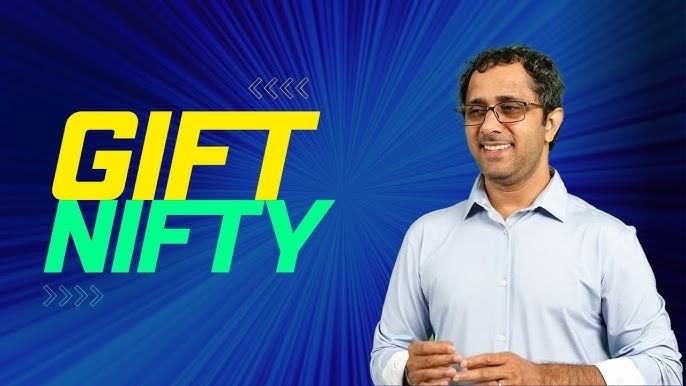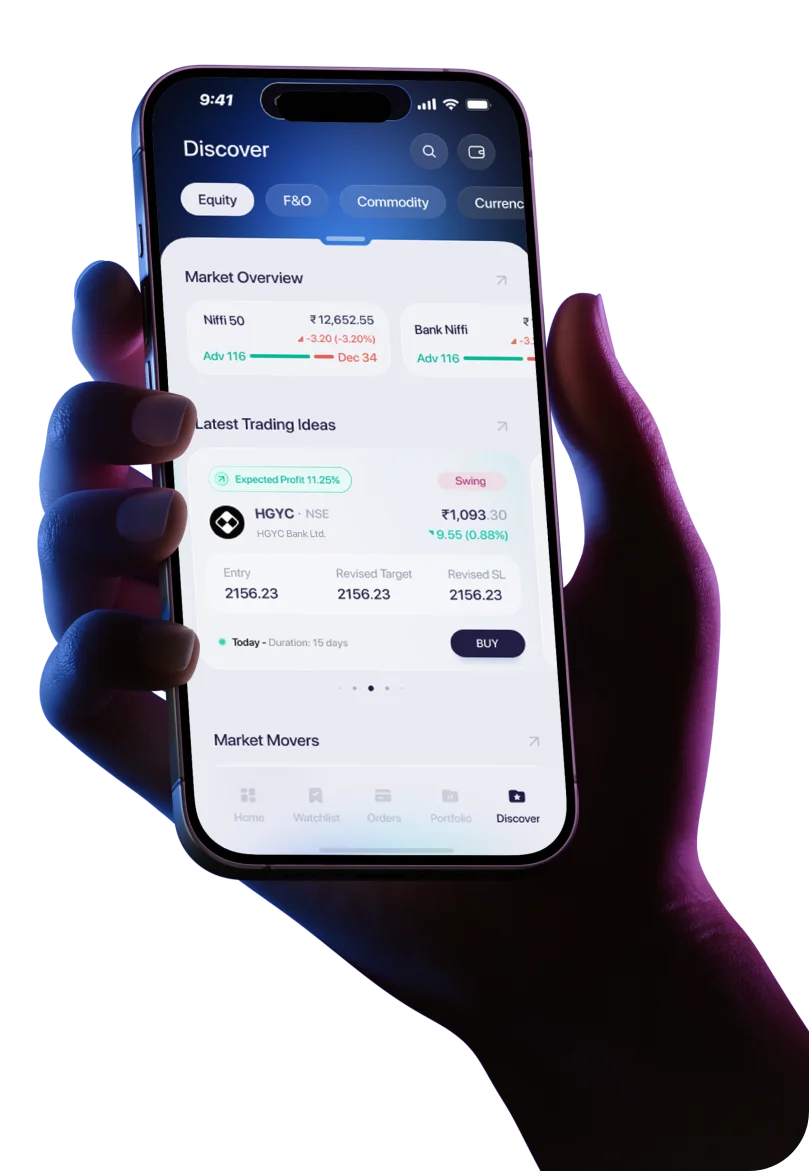You may have heard of India’s GIFT City and be familiar with the Nifty 50. However, do you know what the GIFT Nifty is? Many market participants may have encountered this term but often remain unaware of it. If you belong to this category of traders, it’s time to take a closer look at the GIFT Nifty and how it works.
GIFT Nifty is a futures derivative contract linked to India's Nifty 50 index, giving global investors easy access to Indian equities. The contract operates from the NSE International Exchange (NSE IX), the NSE International Financial Services Centre (NSE IFSC). This course is in Gujarat’s International Finance Tec-City (GIFT City). It makes derivatives trading possible in the futures segment during extended trading hours that align with various international time zones.
The GIFT Nifty futures contract was previously known as the SGX Nifty and traded on the Singapore Exchange (SGX). In July 2023, however, the SGX Nifty was officially moved to the NSE IX platform in GIFT City to create a unified and India-centric trading mechanism. It helped consolidate all the Nifty-based derivatives trading under NSE IX in GIFT City and centralise offshore trading of Indian equity derivatives.
For international traders monitoring the Nifty 50, the GIFT Nifty serves as a crucial trading instrument. Its extended trading hours provide insights into market sentiment and potential trends before the Indian stock market opens. So, in this article, we take a closer look at the GIFT Nifty, how this crucial derivative contract works, and how it differs from the Nifty 50 index.
Understanding the GIFT Nifty
Now that we have seen the GIFT Nifty, let us attempt to understand it better. By offering nearly round-the-clock trading, the GIFT Nifty contract makes it easier for global investors to participate in India’s economic growth and progress. It serves as a bridge to the Indian stock market even during international market hours so that traders can respond quickly and in real time to global developments.
The key difference between the GIFT Nifty and the erstwhile SGX Nifty lies in where and how the contracts are/were traded. While the SGX Nifty operated from Singapore, the GIFT Nifty is a domestic index that trades on the NSE IFSC exchange in India’s GIFT City. This shift enables better regulatory oversight from Indian authorities and keeps trading revenues and activity within the domestic ecosystem.
How the GIFT Nifty Works
Once you understand the GIFT Nifty, you need to look into how this derivative works. The GIFT Nifty futures contract is available for trading for around 20 hours a day, from 6:15 AM on one day to 2:45 AM on the next.
These trading hours allow global investors and traders to access the Indian markets across all major time zones. They also ensure that offshore traders from Asia, Europe, and North America are never locked out of the derivatives segment of the Indian stock market due to mismatches in regional timing.
Another real value-add of the GIFT Nifty is its role in global price discovery. Since the Nifty opens well before Indian markets do, it becomes a critical indicator of early market sentiment. Check out the key features of this futures contract to understand what the GIFT Nifty is and how it works in more detail.
Settlement Currency
GIFT Nifty contracts are settled in US dollars. This makes trading in GIFT Nifty convenient for foreign investors and institutions who operate in global currencies. It also eliminates the need for currency conversion and reduces the associated costs and risks.
Regulatory Framework
The International Financial Services Centres Authority (IFSCA) governs all trading and ensures global compliance standards, transparency, and investor protection.
Dual Session Structure
GIFT Nifty trading operates in two sessions. The first extends from 6:15 AM to 3:40 PM IST, and the second from 4:35 PM to 2:45 AM IST. This split allows traders to make strategic adjustments based on global developments.
Extended Trading Window
The nearly 20-hour trading schedule ensures that global events like economic releases, earnings announcements, and geopolitical developments can be factored into the prices of these Nifty futures in real time.
Syncing with the Indian Market
Trading on the NSE in the Indian stock market from 9:15 AM to 3:30 PM IST. The GIFT Nifty trading hours overlap with this window, so futures contract prices can seamlessly adapt to developments in the home market.
Global Participation
GIFT Nifty trading on the NSE IX is accessible to foreign portfolio investors (FPIs), non-resident Indians (NRIs) and other eligible institutional investors. This expands the breadth and depth of the Nifty-linked trading market, improves liquidity, and streamlines price discovery.
Decoding Recent History: Why the GIFT Nifty Replaced the SGX Nifty
A big part of understanding the GIFT Nifty involves understanding why it was introduced. The shift from SGX Nifty to GIFT Nifty was more than a geographic move. A strategic shift made it possible for India to reclaim price discovery in its equity markets. This previously happened offshore in Singapore with the SGX Nifty.
By replacing the foreign SGX Nifty with the domestic GIFT Nifty, trading shifted to the home exchange at NSE IFSC. This allowed Indian regulators to ensure tighter oversight and data sovereignty. It also ensured that more of the financial ecosystem, like taxes, volumes, and market liquidity, stayed within Indian jurisdiction.
For global investors, the GIFT Nifty offered continuity with additional market depth. It maintained the global access SGX provided, but with infrastructure that mirrored Indian regulations and trading standards. This move also marked India’s intent to develop GIFT City as a trustworthy international finance hub—one that would not merely be reactive to global markets but actively shape them on home turf.
GIFT Nifty vs SGX Nifty
Having seen what the GIFT Nifty is, why it was introduced, and how it works, you may know that it differs from the SGX Nifty. Here is a table that outlines this comparison at a glance, so you can better understand how the new index compares with its previous version.
Particulars | SGX Nifty | GIFT Nifty |
Exchange | Singapore Exchange (SGX) | Singapore Exchange (SGX) |
Location | Singapore | GIFT City, Gujarat, India |
Regulatory Oversight | Singapore regulatory authorities | International Financial Services Centres Authority (IFSCA) |
Trading Hours | 6:30 AM to 11:30 PM IST | 6:15 AM to 3:40 PM IST and 4:35 PM to 2:45 AM IST |
Trading Period | September 25, 2000 to June 30, 2023 | From July 3, 2023 |
Tax Implications | Offshore tax jurisdiction | Within the Indian tax and compliance framework |
Data and Surveillance | Outside India’s control | Regulated and monitored by Indian authorities |
Purpose | Offshore access to Indian markets | Consolidated and India-centric global access |
Benefits of the GIFT Nifty for Traders
It is crucial for traders tracking global cues to know what the GIFT Nifty is. This derivative offers an edge to international traders and helps manage positions across time zones. Its strategic design allows real-time alignment with international markets under India’s regulatory umbrella.
Here are the key benefits the GIFT Nifty offers:
Extended Trading Hours for Better Market Exposure
With trading open for around 20 hours daily, traders can respond instantly to global developments like US and European market movements. This flexibility supports better hedging practices and reduces overnight risk exposure.
Global Participation and Deeper Liquidity
Open to FPIs, NRIs, and institutions, the GIFT Nifty attracts a wide range of players. This broader participation creates deeper order books, tighter spreads, and a more dynamic index-future trading ecosystem.
Transparent Regulations Under the NSE IFSC
All trades are governed by IFSCA, which ensures compliance with global norms. Traders benefit from a secure and transparent environment backed by Indian regulatory oversight, essential for institutional credibility and operational clarity.
Conclusion
You now know what the GIFT Nifty is. It is not a market index, as many traders often believe. Instead, it is a futures derivative contract traded on an Indian stock exchange over extended trading sessions. So, while it may be geographically tied to India, its trade timings also ensure it is convenient for participants. This combination of domestic regulation and global participation makes the GIFT Nifty a unique futures contract in today’s evolving markets.




 Easy & quick
Easy & quick
Leave A Comment?